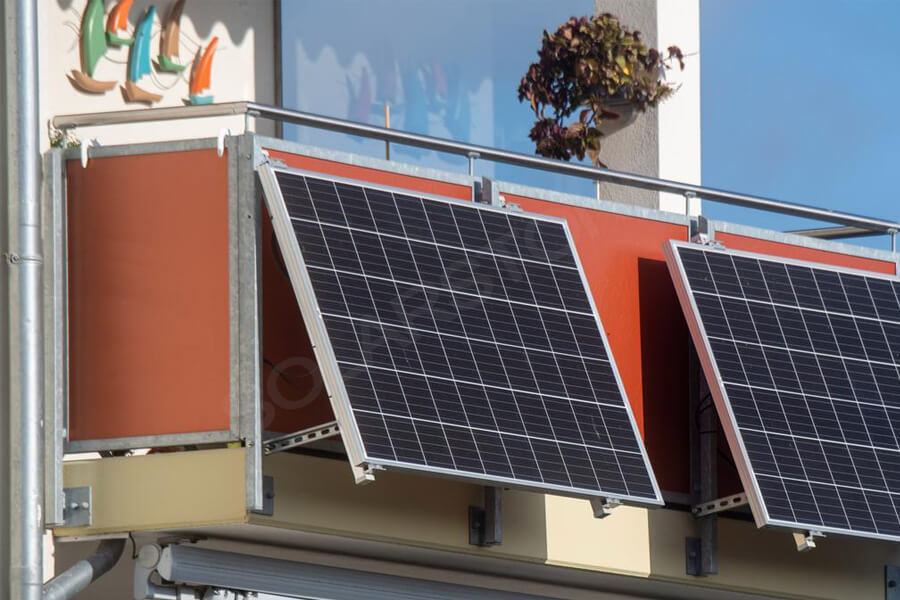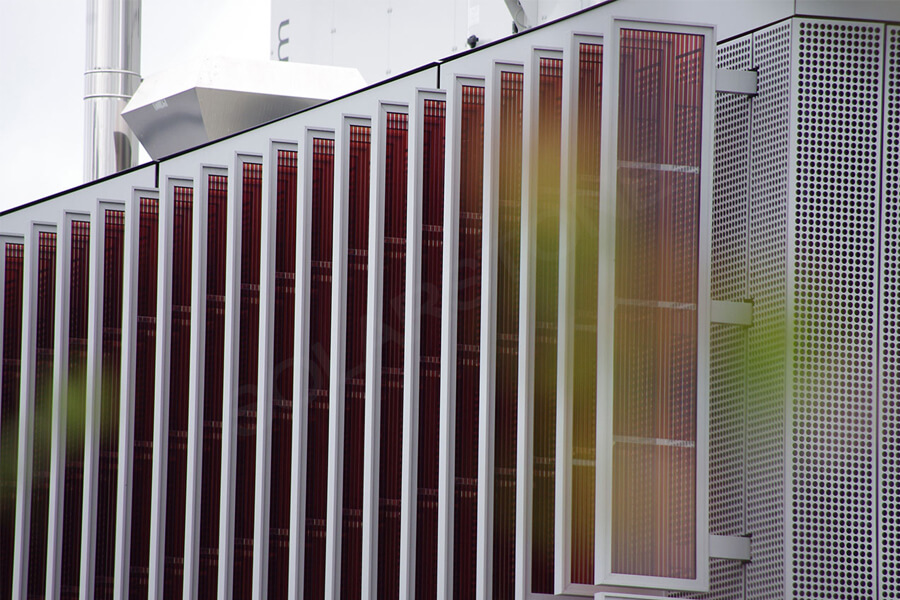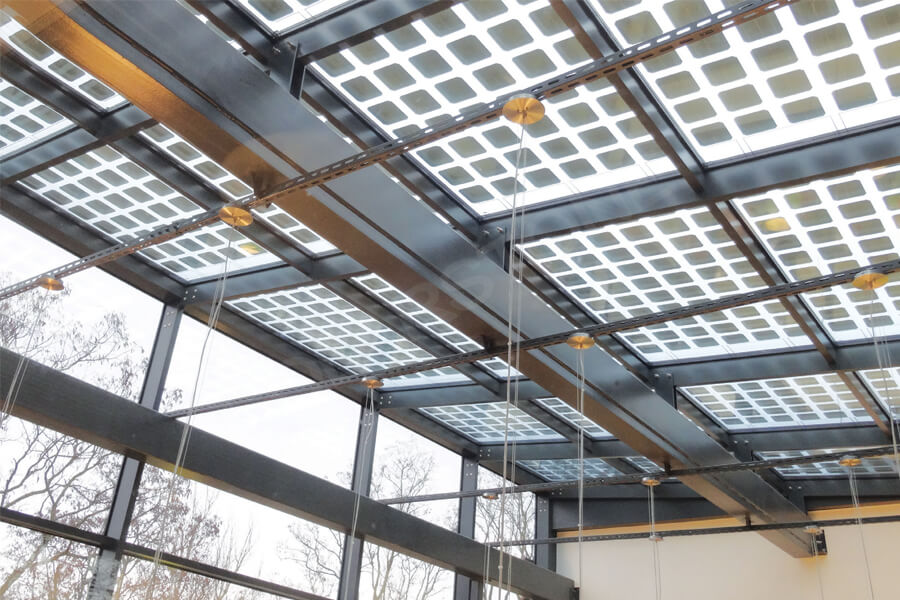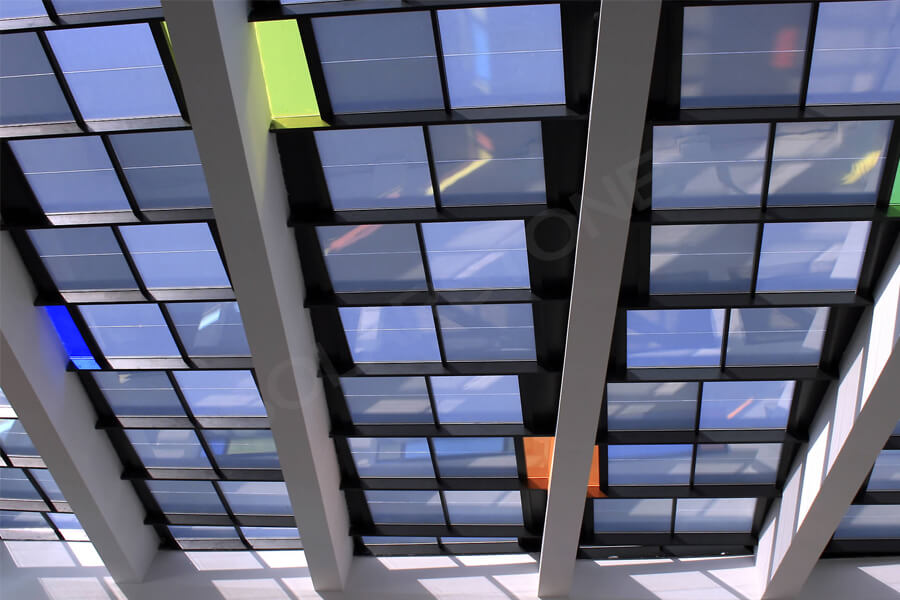Wall mounted photovoltaic power generation system
The wall mounted photovoltaic power generation system directly installs photovoltaic panels on the exterior walls of buildings. This unique external photovoltaic power generation system makes construction and maintenance easier.
Due to the installation of solar energy systems on the exterior walls of buildings, solar cells absorb the radiation from the outside of the building and generate electricity, which was originally absorbed by the surface of the building. This effectively reduces the radiation energy absorbed by the building, especially in the summer season, which can effectively lower the temperature level inside the building.
Louver type photovoltaic power generation system
The heat generated by the photovoltaic building of this system is transmitted through the thermal conductivity of the building envelope structure and the radiation from windows, which plays an important role in improving indoor thermal comfort performance in summer. Unlike other wall mounted photovoltaics, adjustable angle louvers allow buildings to maximize the utilization of light energy and fully utilize building space.
Daylighting skylight photovoltaic system
The skylight of this system is generally located in the lobby of buildings, which is usually the lobby skylight of iconic buildings in China, such as museums, science museums, and other venues. If semi transparent double glass photovoltaic panels are modified or installed, the skylight space of the building can be more effectively utilized while meeting the lighting needs, and it can also showcase a modern atmosphere for these technology venues.
Future research and development focus
Most of the energy consumed inside buildings is used to regulate temperature. At present, there are some examples of passive solar houses used for heating, but these buildings are relatively expensive and difficult to promote. The cost of active solar houses is higher and their promotional value is smaller. Therefore, future research on solar houses must be a combination of renewable energy and conventional energy.
In the implementation of the plan, different plans can be coordinated and coordinated according to the functions of the building rooms, which can effectively reduce the initial investment of photovoltaic power stations for building energy supply and improve the operability of the entire plan.
The control and regulation technology of air temperature inside buildings should be applied as intelligently as possible, in accordance with nature to meet the needs of human health and comfortable living. The purpose of air temperature control and regulation technology should be to minimize the so-called artificial environment.
On the premise of using active energy supply to ensure the comfort of living inside the building, it is advisable to combine active functional technology and passive energy supply technology as much as possible to achieve the optimal cost-effectiveness of solar energy buildings.
Summary
BIPV combines existing buildings with solar power generation devices to achieve the functions of traditional buildings, and can be used to provide electricity for indoor buildings through solar photovoltaic power generation. The integration of photovoltaic buildings is not simply the stacking of photovoltaic power generation systems and buildings, but the organic combination of the two, which can achieve a 1+1>2 effect.






